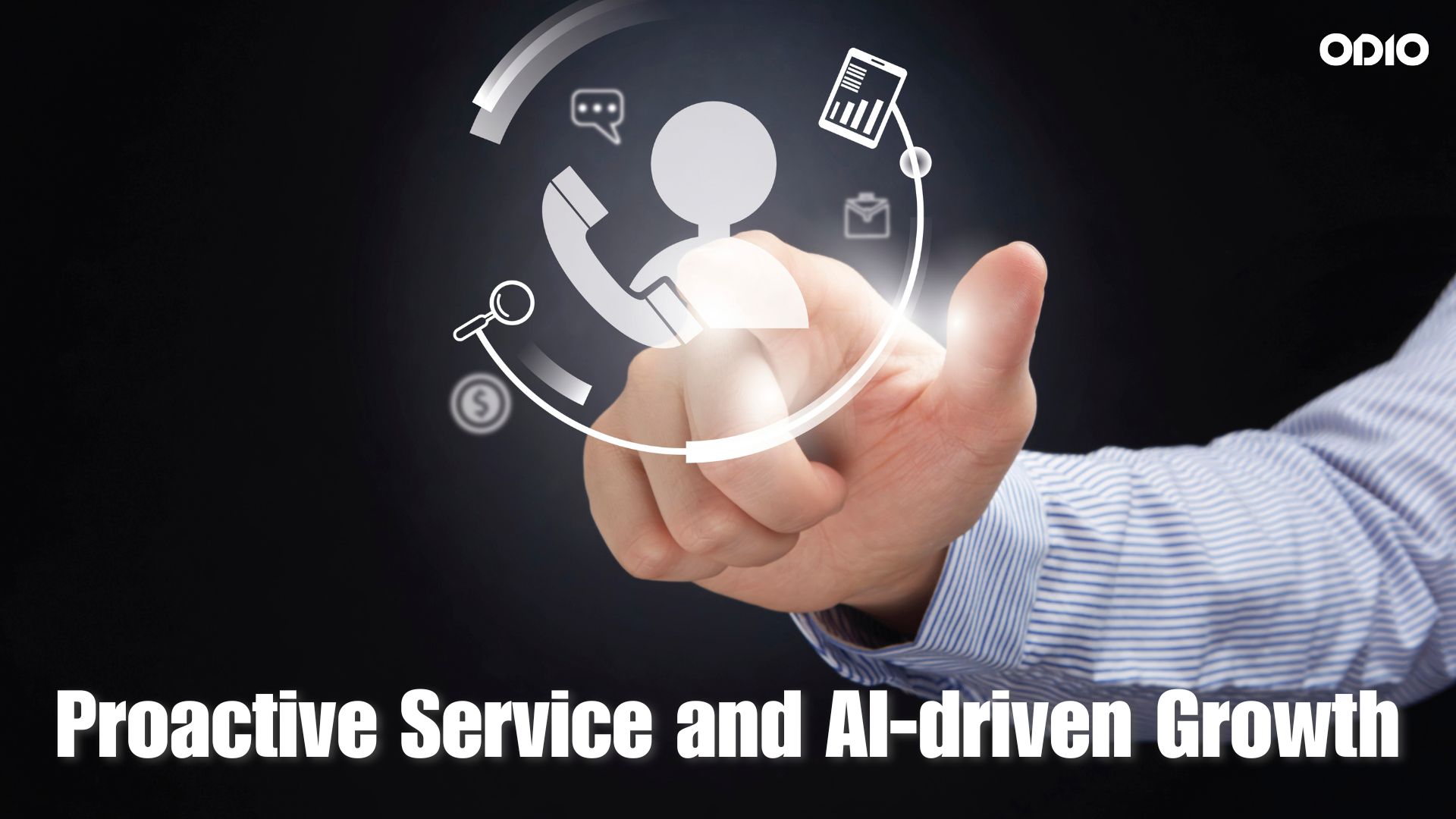
In the dynamic landscape of customer service, the evolution from a reactive model to a proactive approach signifies a crucial shift in how businesses engage with their clientele. Let’s embark on a journey through time, exploring the trends that have shaped customer service and led us to the era of proactive strategies powered by AI.
Evolution of Customer Service Trends
Customer service has come a long way from being merely a support function. Over the years, businesses have witnessed a paradigm shift in their approach, transitioning from reactive measures to more proactive, customer-centric strategies. The traditional model, focused on addressing issues after they arise, is giving way to a forward-thinking methodology that seeks to anticipate and address needs before they become problems.
The Shift from Reactive to Proactive Strategies
In the past, customer service primarily functioned as damage control, resolving issues as they surfaced. Today, the emphasis is on foreseeing potential concerns and taking proactive measures to mitigate them. This shift is driven by the realization that preventing issues not only enhances customer satisfaction but also holds the key to unlocking hidden revenue streams.
Role of AI in Driving this Transformation
Enter Artificial Intelligence (AI), the catalyst behind the revolutionary transformation in customer service. AI is not just a technological upgrade; it’s the driving force that empowers businesses to move from reactive firefighting to a proactive, strategic engagement with customers. The integration of AI technologies marks a pivotal moment in the evolution of customer service, enabling businesses to harness the power of data and insights for anticipatory action.
In the world of customer service, staying ahead means more than just resolving issues promptly; it involves anticipating customer needs and desires before they even express them. Let’s dive into the core of proactive customer service, examining its definition, characteristics, and the profound impact it can have on customer satisfaction, loyalty, and the elusive realm of hidden revenue growth.
Proactive Customer Service
Proactive customer service is not merely a buzzword but a strategic approach that aims to address customer needs before they escalate into problems. It involves a keen understanding of customer behavior, preferences, and potential pain points. Characteristics include predictive problem-solving, personalized interactions, and a holistic customer-centric approach.
Importance of Anticipating Customer Needs and Issues
The value of proactive customer service lies in its ability to foresee and address customer needs and issues proactively. By leveraging AI-driven insights, businesses can anticipate customer requirements, providing solutions and support before customers even realize they require assistance. This anticipatory approach not only enhances customer satisfaction but also fosters a sense of loyalty.
How Proactive Customer Service Contributes to Customer Satisfaction and Loyalty
Customer satisfaction is the cornerstone of any successful business, and proactive service is the key to achieving and maintaining it. By addressing issues before they impact the customer experience, businesses create a positive perception, build trust, and instill a sense of loyalty. Proactive customer service goes beyond resolving problems; it actively contributes to the overall satisfaction and retention of customers.
AI Technologies Powering Proactive Customer Service
AI is not a distant concept but a tangible force reshaping the customer service landscape. From chatbots to predictive analytics, AI technologies are at the forefront of proactive customer service. We’ll delve into the different facets of AI that empower businesses to anticipate customer needs, optimize operations, and ultimately drive hidden revenue growth.
Role of Machine Learning and Predictive Analytics in Anticipating Customer Behavior
Machine learning algorithms, a subset of AI, empower systems to learn from data and make predictions. In the realm of customer service, this translates to the ability to anticipate customer behavior and needs. Predictive analytics further enhances this capability by analyzing historical data to forecast future trends. Together, they form a dynamic duo, enabling businesses to stay one step ahead in meeting customer expectations.
Examples of AI Applications in Identifying and Addressing Potential Issues Proactively
The true power of AI in proactive customer service lies in its ability to identify and address potential issues before they impact the customer experience. Through real-time data analysis and pattern recognition, AI applications can detect emerging issues, enabling businesses to take preemptive action. From resolving technical glitches to predicting customer preferences, AI-driven solutions are revolutionizing how contact centers operate.
How Proactive Customer Service Opens Avenues for Upselling and Cross-selling
Proactive customer service goes beyond issue resolution; it presents a unique avenue for businesses to engage customers with relevant offers and recommendations. By understanding customer preferences and purchase history, AI-driven systems can identify opportune moments to introduce complementary products or services. This strategic approach not only enhances the overall customer experience but also creates opportunities for revenue optimization.
The Impact of Personalized Recommendations on Revenue Growth
At the heart of proactive customer service lies the ability to deliver personalized recommendations. Whether through intelligent chatbots or predictive analytics, businesses can tailor their offerings to individual customer preferences. The result is not only satisfied customers but also increased sales as personalized recommendations resonate with their specific needs and desires.
Practical Steps and Tips for Integration
- Assess Your Customer Journey – Conduct a comprehensive analysis of your customer journey to identify touchpoints where proactive engagement can make a significant impact.
- Choose the Right AI Tools – Explore AI tools tailored to your contact center needs, considering factors such as predictive analytics, chatbots, and machine learning capabilities.
- Train Your Team – Provide training for your customer service team to adapt to the proactive model, emphasizing the importance of anticipatory engagement and utilizing AI tools effectively.
Considerations for Selecting and Implementing AI Tools
- Scalability – Choose AI tools that can scale with the growth of your contact center, ensuring long-term viability and adaptability to evolving customer needs.
- Integration with Existing Systems – Ensure seamless integration with your current customer service infrastructure to facilitate a smooth transition and maximize the benefits of AI-driven solutions.
Addressing Potential Challenges and How to Overcome Them
- Resistance to Change – Implement a change management strategy to overcome resistance, emphasizing the positive impact on customer satisfaction and overall operational efficiency.
- Data Security Concerns – Prioritize data security measures and communicate them transparently to alleviate concerns among both customers and internal stakeholders.
Exploration of Emerging Trends and Technologies in Proactive Customer Service
- Advanced Predictive Analytics – Dive into the advancements in predictive analytics, foreseeing a future where AI-driven insights become even more accurate in anticipating customer behavior and needs.
- Integration of Virtual and Augmented Reality – Explore how the integration of virtual and augmented reality technologies will take proactive engagement to new heights, providing immersive customer experiences.
Anticipated Impact on Revenue Growth in the Long Term
The future of proactive customer service is intrinsically linked to sustained revenue growth. Anticipated impacts include:
- Continuous Revenue Optimization: Proactive strategies, powered by AI insights, will continually optimize revenue streams by identifying new opportunities and refining existing processes.
- Enhanced Customer Loyalty: Anticipatory engagement fosters stronger customer loyalty, ensuring repeat business and increasing the customer lifetime value.
- Competitive Advantage: Businesses that embrace the future of proactive customer service will gain a significant competitive advantage, positioning themselves as industry leaders in customer-centric innovation.
Encouragement for Businesses to Embrace Proactive Customer Service as a Strategic Advantage
In closing, the future belongs to those who embrace change and innovation. The integration of proactive customer service, driven by AI, is not just a trend but a strategic imperative for businesses seeking sustained growth and customer satisfaction. As you envision the future of your contact center, consider how AI, machine learning, and proactive strategies can propel your business into a new era of customer engagement and revenue optimization.
As we wrap up this exploration of proactive customer service and its transformative impact, let’s reflect on the journey we’ve taken and the possibilities that lie ahead. How will your contact center adapt to the evolving landscape of customer service? What steps will you take to unlock hidden revenue through proactive engagement and transformative AI strategies? The future is yours to shape, and the answers may just lie in the proactive evolution of your customer service approach.
Thank you for reading. We hope this blog has been helpful in providing you with valuable information. For more insightful blogs like this, please follow our blogs at Odio.

